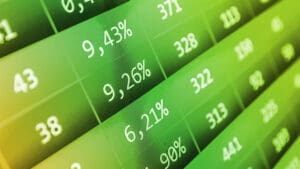Markets are nervously awaiting the results of the latest FOMC meeting at 2PM Eastern Time today and the subsequent press conference with Chairman Powell. Every Fed meeting promises to be consequential, but today’s comes amid one of the most turbulent times in recent memory.
Sure, the emergency meeting in early March 2020 and the regularly scheduled meeting two weeks later came amidst the worst of the Covid crisis. But what needed to be done was clear. The economy was seizing up as the pandemic raged, so it was evident that they needed to add liquidity. The question was how much, and even then it took them two tries to stabilize reeling markets.
Even though the current situation is not quite as dire today, it is far more challenging. The Fed will be almost assuredly be raising its target rate in the midst of a bear market in stocks. It’s not clear what the definition of a bond bear market is, but I would venture to say that a 75 basis point rise in 2-year Treasury note yields in a little over a week certainly would count as quite bearish. This is the type of environment that normally leads to accommodative, not restrictive, policies from central banks. But then again, little is normal about the current economic environment.
The Fed was trying desperately to be cautious and measured in their efforts to remove their post-Covid accommodation from a potentially over-stimulated economy. Previous attempts to tighten policy were accompanied by financial stresses, so it is understandable why they wanted to be particularly careful; telegraphing rate hikes and balance sheet reduction well in advance, and moving slowly once those policies were implemented. (Bear in mind that today is the first maturing bond on the Fed’s balance sheet whose proceeds are not being reinvested – in other words QT only started today.)
Then they were overtaken by events. Inflationary pressures were building even before the world received an exogenous economic shock from Russia’s invasion of Ukraine. They initially tried to slough off rising prices as being “transitory.” That cost them time to deal with rising prices when they were evident but not acute. Instead, inflation is now running at 40 year highs, making it a primary concern for citizens around the world. Inflation at its core is too much money chasing too few goods. Even though much of the price pressure comes from supply shocks that central banks are not well-positioned to address, it is hard to dispute the role that fiscal and monetary stimuli played in pushing prices higher.
The Federal Reserve’s dual mandate is for stable prices and full employment. It was frustrating to see the Fed offering little besides rhetoric and guidance as prices were rising at the same time we seemed to be meeting the Bureau of Labor Statistics’ definition of full employment. Now they find themselves with solid employment, though cracks may be showing, prices spiraling higher, and only now beginning to implement more stringent measures. A good portion of the recent declines in asset prices can be attributed to Fed inaction and their delay in addressing crises that were evident to investors.
Here is another wrinkle – it is possible that hindsight will show that the Fed raised rates during a recession. The definition of a recession is two consecutive quarters of negative GDP growth. GDP fell 1.5% in the first quarter of this year, and the most recent Atlanta Fed’s GDPNow forecast shows a mere 0.9% rise for the coming quarter. That statistic was last updated on June 8th – prior to the 40-year high CPI and record low University of Michigan Consumer Sentiment reports that were released on Friday the 10th. It is entirely possible that if consumers slam their wallets tight enough that they could tip that estimate into negative territory (the next release is scheduled for later today).
I have frequently referred to Chairman Powell as “Golidlocks in a Suit” for his remarkable ability to offer opinions that are “just right” for those trying to interpret post-FOMC press conferences. Sure, I called him “Kobe Bryant” after the last meeting when stocks zoomed 3% during and after the press conference only to give those gains back in the next two sessions. Now we come in with heavily oversold markets that are desperate for good news, but with an unusual amount of uncertainty about the level of rate hikes and other measures. We know that the Fed is in a very difficult situation, one that will require particular aplomb to wriggle out from. We will see today if Mr. Powell can use his Goldilocks skill to pull a Houdini-like escape.
Disclosure: Interactive Brokers
The analysis in this material is provided for information only and is not and should not be construed as an offer to sell or the solicitation of an offer to buy any security. To the extent that this material discusses general market activity, industry or sector trends or other broad-based economic or political conditions, it should not be construed as research or investment advice. To the extent that it includes references to specific securities, commodities, currencies, or other instruments, those references do not constitute a recommendation by IBKR to buy, sell or hold such investments. This material does not and is not intended to take into account the particular financial conditions, investment objectives or requirements of individual customers. Before acting on this material, you should consider whether it is suitable for your particular circumstances and, as necessary, seek professional advice.
The views and opinions expressed herein are those of the author and do not necessarily reflect the views of Interactive Brokers, its affiliates, or its employees.





















Join The Conversation
For specific platform feedback and suggestions, please submit it directly to our team using these instructions.
If you have an account-specific question or concern, please reach out to Client Services.
We encourage you to look through our FAQs before posting. Your question may already be covered!